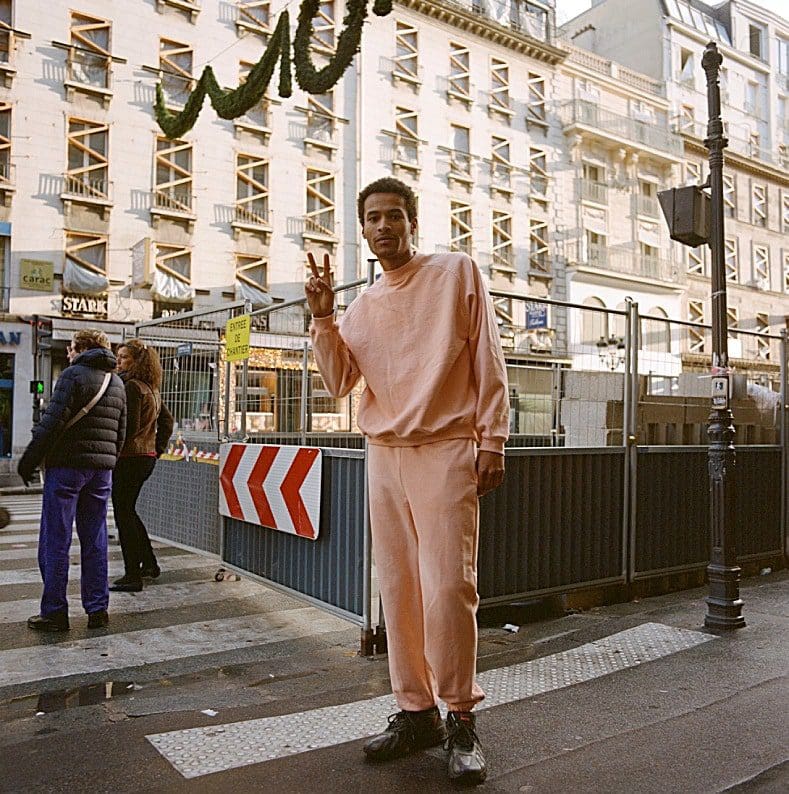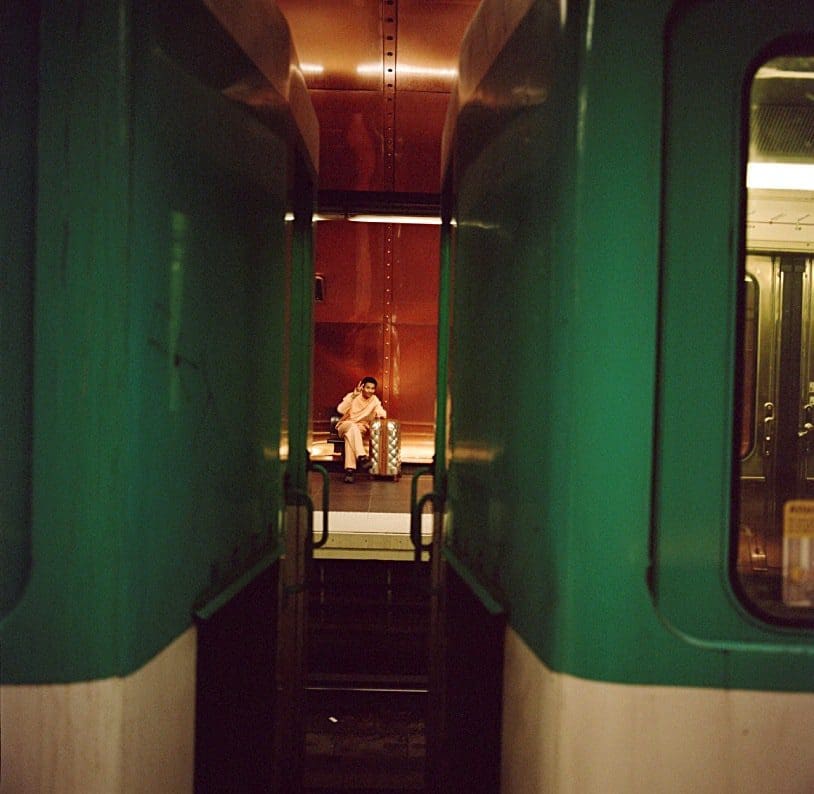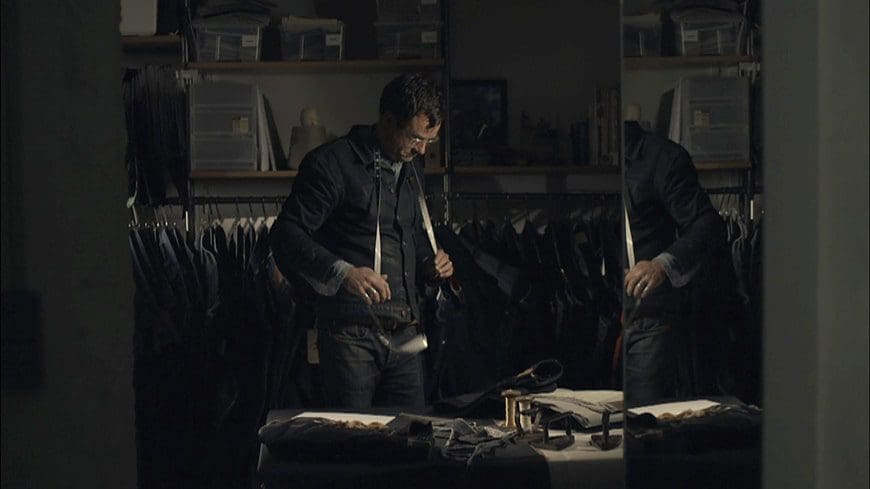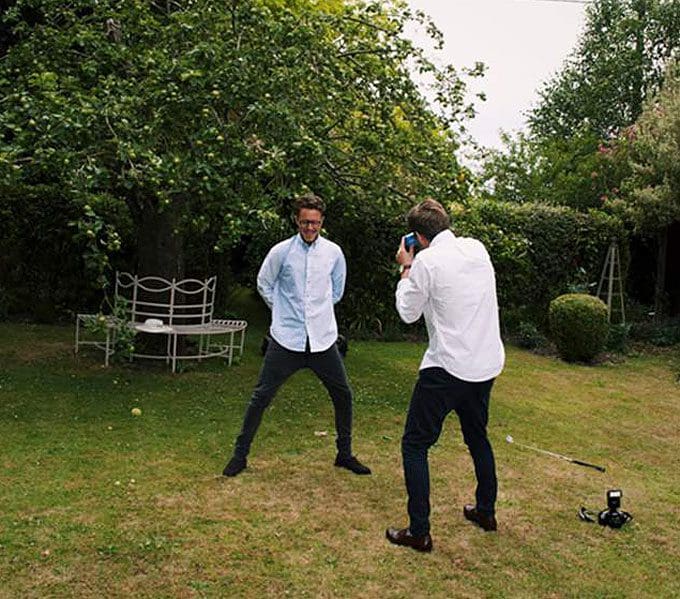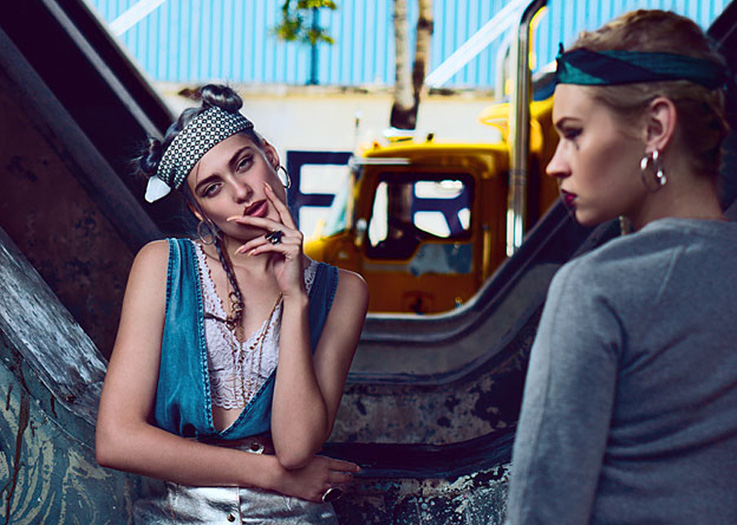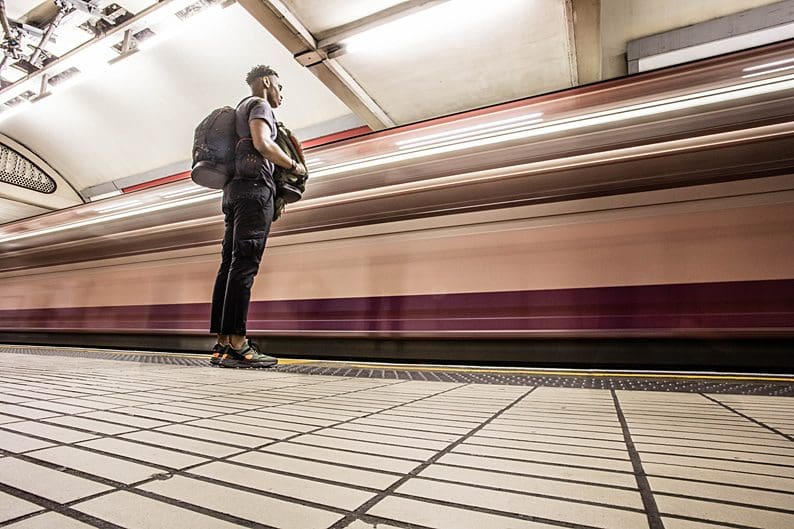From a Brit School background to absorbing inspiration from the likes of Alexander McQueen, Kumi Keazor tells the story of why he took his up-and-coming namesake brand away from London, where most of his creative contemporaries are based, to an obscure village in the foothills of the French Pyrenees.
Kumi Keazor grew up in Tufnell Park, London, where he attended several schools before settling in a Steiner school which radically changed his education and the way he viewed things creatively. At the age of 14, he was selected for The Brit School and committed himself to an education in art.
Kumi reflects, “Going to that school [The Brit School] was the most formative aspect of my upbringing. All the friends I have today I met there. You’re in a school where everyone else is sharing that passion in line with the subject that they’ve chosen. Students did design, theatre, music, media, and I went in for art because it had the biggest impact on me. I learnt from not only the school but my friends too – we’re teaching each other, showing each other stuff in the context of the subjects we are studying, and it meant I was surrounded by these subjects, but mainly music. I had a lot of friends who did music, and in a way, I can’t understand why I didn’t get into music. Being surrounded by it made be more obsessed with it but it just had a secondary impact on me and making art in that context. I got friends round me making music and other friends making art and we’re doing that stuff together. It even went so far as starting to do graffiti because it’s like a way of being able to do artistic things but as a group – kind of like Lord of the Flies style, but with art as the endpoint of it – planning missions and practising and drawing all the time. Those experiences set me up for my adult life whether I liked it or not, and thankfully I did like it.”
Teachers would often say at the time that there’s no money in art, encouraging Kumi to think “maybe I can put my art onto the canvas of clothes.” During his years at The Brit School, Kumi worked as a model, a profession which ultimately led him to choose his path within the fashion industry.
Kumi explains, “It was the Alexander McQueen job that I did which made me decide what I want to do; I want to be on the other side. It was Sarah Burton’s first show of Alexander McQueen since he had died, so it was a historic show for the brand, and I was there. It was fascinating watching Sarah and her assistant talking with the ateliers whilst they were there fitting stuff for me; dissecting what needs to change and how quickly. It’s quite shocking to see how much would be changed in just 24 hours. I just thought, this is really exciting.”
He continues, “I did two years in Milan; the first one was the first show after McQueen’s death, and the second (the year after) was a menswear presentation, meaning that Sarah Burton would be talking to buyers about the looks. There was a moment that really inspired me, when she was talking to one of the buyers about these silk trousers I was wearing, and she was saying if you can see on the calf area of the leg of the trousers he’s wearing, you can see how it is shaped to his leg – we’ve done this by steaming the trousers. I had to stand normally and be all mannequin like, but I remember thinking in that moment, that’s insane, the shape is not even coming from the seam, so there’s a lot more to this than first meets the eye. That was an inspiring moment, when I heard her breaking down these techniques that you don’t get unless it’s at haute-couture level. I thought, I’d love to do something like that.”
For several years, Kumi continued to model and put on art shows with his paintings, while trying printing and predominantly experimenting with making shirts. At the age of 22, his perfectionism and subsequent irritation with the limitations of the quality of what he was making forced him to fully commit to garment making. Brita Hirsch was running a tailoring course in Macclesfield, teaching suit making, and Kumi took the opportunity to begin his journey in creating haute-couture level clothing with the painting and illustrations he has always loved to do, combining the two on a new level.
Kumi said, “I had committed to this tailoring course in just a rural part of the country – I didn’t really want to because it wasn’t in London, and being young, you think I’m going to lose my friends, but you don’t. I was doing it for a year, and I found it just helped my soul a bit. It was less frantic and allowed a clarity of focus and thought being there. Being in the countryside, and especially in that region which was historically known for its textile industry, I couldn’t even remember how I initially felt worried about leaving London. I was going to these old factories from the 19th century, which were so beautiful, and working hard. I’m glad I did it. He’s not my favourite artist but I felt like David Hockney in those moments – I was like, wow, he gets so much inspiration from these regional parts of the country, and it seems to fulfil his soul a bit. You recognise that when you see his paintings. I felt the same way – there were no distractions, the air is clean, and I felt that clarity and focus towards what I was doing. I was born and grew up my whole life in London, so it was a bit of a shock to be somewhere completely different but actually that buzz of the city was good to be away from.”
After finishing the course in 2019, Kumi began working with an old family friend whose tailor was retiring. He brought the clients, Kumi made the suits. Unfortunately, COVID happened and it became less busy. Kumi’s business partner developed health issues and everything came to a halt. At this point, Kumi doubled down and began making his brand.
He remembers, “It was quite difficult – which I’m sure it was for the vast majority of people – mentally; working on something and not fully knowing if it’s even going to be anything, thinking it is just going to be a dormant thing, working away and not knowing when lockdown would ever end, whether what I’m working on will completely drastically change.”
Two years later Kumi himself struggled with health issues from a combination of pressures; from the hecticness of city life, what he was eating, working in a small confined studio space that was his bedroom, and living with lots of other people in lockdown without the space to really run a business. In 2022, as a result, he moved to the village of Chalabre, France, where his mother lives and where he is now.
Kumi describes his space in Chalabre, “My studio now is an old shop front with natural light, and the town itself is beautiful. Some of the foundations and houses are over 800 years old and you can see it in the brickwork. There’s a soul to the town which feeds the spirit and just naturally gives me inspiration, gives me a drive to make something here. Coincidentally, this region of France, the Aude and Ariege, is also historically a fabric textiles industry area – just like where I was in Lancashire. That was quite a romantic idea, when I realised I could try and do my bit to bring this region back to something like what it was then. Importantly, here, there’s a clarity in the simplicity of life which has kind of forced my hand a bit in some respects. I don’t have as many options and so much distraction, I eat well here and I feel it in my body and my mind.”
Kumi’s designs are informed by his tailoring experience. The technical structuring of his garments is amalgamated with a strikingly present aesthetic from his own prints and graphics. He strives to find ways of transferring traditional suit-making techniques onto more wearable pieces for younger people – onto women’s and menswear workwear.
He explains, “Because of my training, I’ve been able to try to bring that younger customer in and open their eyes to something different to off the peg suiting and more serious pieces. When I’ve had older customers, it’s been in a classic tailoring context where you ask, what do you like? What colour material do you like? How do you like your fit? In the back of my mind, though, I’ve always wanted to impose my style onto the clothes, and I think that naturally has a positive effect on younger people wanting to buy into designers – into their style and design point of view. I’m starting small with the brand so that people can buy into it in a way and not feel worried about spending a lot of money for something, particularly as my pieces are all online at the moment.”
Kumi punctuates by looking forwards, “France is the world leader for luxury and artisanal goods and has been able to maintain that for centuries. It was a big aspect of me wanting to come here. The French take their cultural heritage incredibly seriously. They love art and culture for art and culture’s sake, and it fills the national identity with a lot of pride. Their openness to the arts in general means that whatever you’re doing in a creative context, they will always give you the time of day, and I am grateful for that. Coming to France as someone who’s grown up in the UK, I wanted to learn the language and really get involved. I want to bring the things that have moulded me as a Brit and work my way up in the context of being here, in this place. I want to hone my craft and impart my stylistic input into this world.”
For more visit kumikeazor.com


